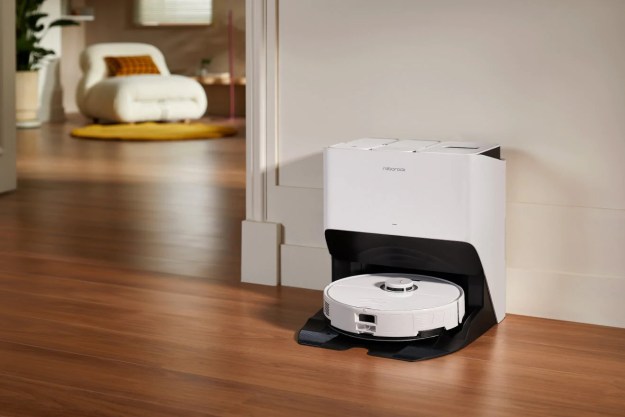When the phrase “video doorbell” comes to mind, one of the first companies we think of is Ring, and for good reason. Despite some reputation dings, Ring is a go-to name for smart doorbells and cameras, thanks in part to its sleek-looking hardware that is loaded with features.
Ring doesn’t skimp on product options, either. In fact, there are so many doorbells to choose from that the lineup can be a bit overwhelming if you’re just starting your research. Don’t worry, though — your friends at Digital Trends have you covered.
We’ve helped you break down the pros and cons in Ring head-to-heads before. Now it’s time for a new battle. Today, we’ll be pitting the Ring Video Doorbell 3 against the Ring Video Doorbell Pro — judging on design, video quality, installation, features, and price. Read on to see which emerges as the victor. You can also take a look at some of the best Ring doorbell deals we’ve found for you today.
Design
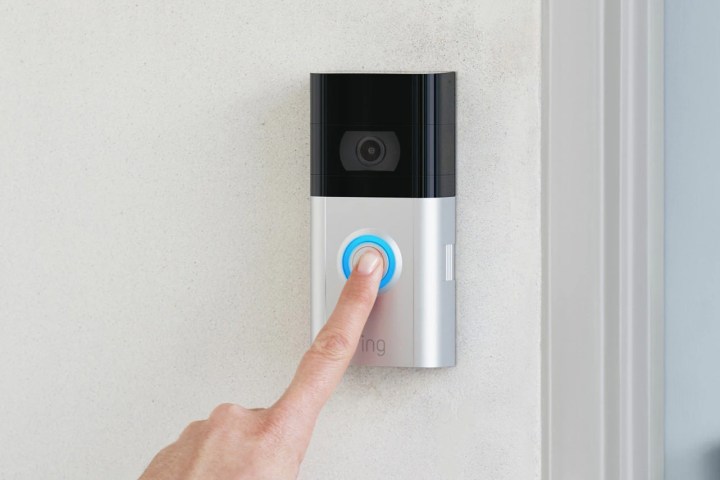
Ring is big on aesthetics. The company’s doorbells never fail to look awesome, but sometimes we don’t want to draw attention to our prized tech. That’s something to consider as we weigh in on the numbers.
The Ring Video 3 measures 5.1 inches tall, 2.4 inches wide, and 1.1 inches from front to back. Not too shabby for a battery-mounted cam and pretty similar dimensions to Ring’s other battery-powered bells. The Video 3 also comes with your choice of either satin nickel or Venetian bronze faceplates, improved mounting screws, and wedge and corner pieces for angling the camera. For surveillance and recording, the Video 3 sports a 1080p HD camera with a 160-degree field of view.
Aesthetically, the Video Doorbell Pro is a bit smaller all around. At 4.5 inches tall, 1.85 inches wide, and only 0.8 inches deep, the Video Pro is certainly a bit sleeker than the Ring 3, which will come in handy if your mounting real estate is limited.
The Doorbell Pro also comes with four different faceplate styles: Satin nickel, Venetian bronze, pearl, and black. There’s even a retro mounting kit for installs where you’ll be replacing a first-gen Ring doorbell. Once your old bell and bracket are removed, the retro kit is mounted using the same holes as the original hardware, making your install/upgrade quick and easy.
Camera-wise, the specs are identical to the Video 3. For posterity, that’s 1080p HD with a 160-degree field of view. While the differences aren’t enormous, we’ll give this one to the Video Pro for a slightly more minimalist bell body, more faceplate options, and the retro kit.
Winner: Ring Video Doorbell Pro
Video quality
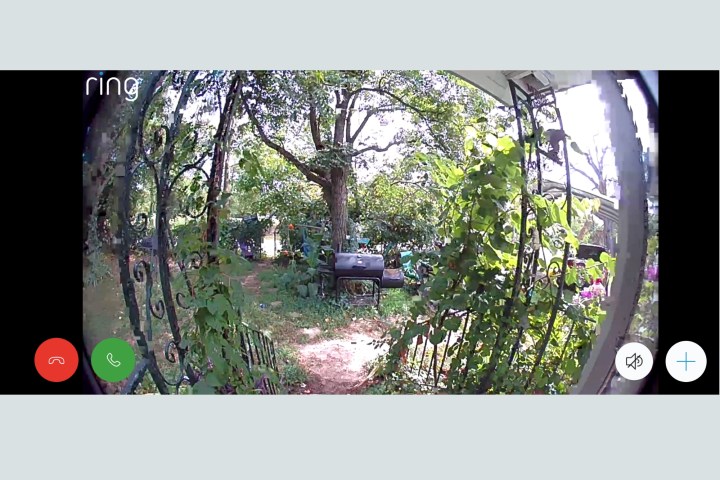
Like previous Ring generations, both the Video 3 and Video Pro record and display in 1080p HD. Neither model features SD card storage, so if you’re planning on recording a lot, your best bet is to sign up for a Ring Protect plan. For only $3 per month (or $30 per year), a Protect subscription grants you unlimited video and photo capture with 60 days of video history. For $10 a month (or $100 per year), you can opt for a Protect Plus subscription, which includes extras like extended warranties for every Ring device in your home.
You’ll be hard-pressed to pick out differences between the Video 3 and Video Pro in a side-by-side video comparison, but there are a few things to consider. For one, if the Video 3 is low on battery, there’s a possibility of lag or lower-res video being beamed to your phone instead of full-on HD. For the Video Pro, there is no battery to speak of. The bell itself is hardwired directly to your home (more on that in the next section), so as long as there’s power to your house, your video feed should be consistently stable.
With identical live video and recording capabilities (and an equal amount of variables to consider), we’ll call this one a draw.
Winner: Tie
Installation
Here’s where things are majorly different between both Ring products. While the mounting hardware is similar between both the Video 3 and Video Pro, the Video 3 lets you choose between a battery-only install or hardwiring to your home’s existing doorbell system. If you’d prefer a battery, your install is as simple as mounting the bracket and popping the battery pack in. You’ll hear a chime once the bell and battery have successfully linked. Download the Ring app to complete activation, and that’s it.
For hardwiring your Video 3, you’ll want to make sure your home’s wiring is up to code (8-24 VAC, 40VA max, 50/60Hz) and that you or someone you know is comfortable with the added installation steps. Chances are, though, if you’re buying a Video 3, you’re buying it for the quick-release battery. It’s easy to re-juice and should last 10 to 12 months on a single charge.
For the Video Pro, the only option is hardwiring. Required doorbell specs are a bit different (16-24 VAC, 40VA max, 50/60Hz), and you’ll also need to install the included Pro Power Kit inside your home’s chime box. While hardwiring isn’t the toughest DIY venture, the convenience of a battery is too good to pass up. Therefore, the Video 3 takes home the gold.
Winner: Ring Video Doorbell 3
Features
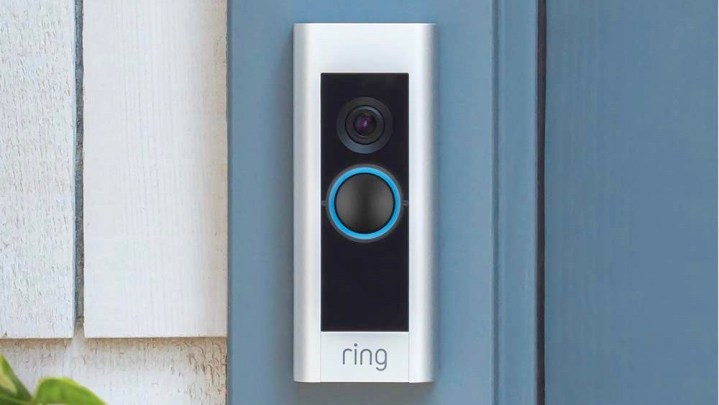
At a glance, the Video 3 and Video Pro share many of the same key features. For starters, both doorbells feature two-way talk. Think of it as an intercom between your phone and the front door. On your end (through the Ring app), you’ll be able to see who’s at the door and talk to them. They’ll be able to hear you, and you’ll be able to hear their response.
Speaking of the Ring app, the Video Pro allows you to draw customizable motion zones on your preferred mobile device. Say you live on a fairly busy street, but your Ring’s camera is picking up all the passing cars. Drawing a custom motion zone around your front yard will tell your Ring system to only alert you if there’s motion on your property. This helps to keep unnecessary notifications to a minimum.
Ring’s video doorbells are only compatible with Amazon Alexa. You’ll first want to add the Ring skill to your skills list. Once enabled and paired with your Ring, you’ll be able to say things like, “Alexa, who’s at the front door?” If you’re saying “who” commands to a visual voice assistant, such as an Alexa-powered smart display, the device’s screen will become a live view for your Ring bell-camera.
At this point, you may be asking yourself if the Video 3 and Video Pro even have any differences. The answer is yes, indeed. It’s a feature called Advanced Pre-Roll that you won’t be getting with the Video 3 — or any battery-optional Ring, for that matter.
Standard for the Video Pro, Ring Elite, and some other wired Ring cams, Advanced Pre-Roll automatically records six additional seconds of video before a motion event is triggered. Unlike the regular Pre-Roll feature you’ll find with the Ring Video Doorbell 3 Plus, Advanced captures six seconds of pre-event video in full color, high definition, and full sound. Compare that to regular Pre-Roll’s four seconds, black and white, standard definition, and no audio. A Ring Protect subscription is required, but for that kind of security, we can’t think of a reason not to sign up.
This was a tough call to make, but for features, we’re awarding the Video Pro. The wired bell delivers the goods with smart features like customized motion controls and Alexa integration, padded with extra security, thanks to Advanced Pre-Roll. Disregarding power sources, the Video Pro can simply do more than the Video 3.
Winner: Ring Video Doorbell Pro
Price
Right now, the Ring Video Doorbell 3 goes for $180. This is down from its regular retail price of $200. The Video Doorbell Pro currently goes for $170.
Even at the slightly higher cost, the Video 3 is probably a better deal than the Video Pro given that it lives off a battery and does everything the Video Pro can do — except for Advanced Pre-Roll. Heck, you can even wire the Video 3 if you want to.
For the price, the gold goes to the Video 3. With a battery option and the same great performance as its opponent — save for one neat advantage and a bit more bulk — it’s a better overall value.
Winner: Ring Video Doorbell 3
Our choice
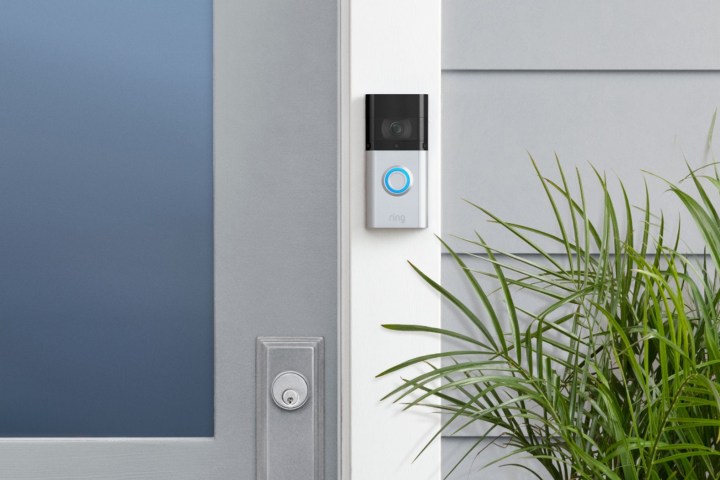
Both the Video 3 and Video Pro are phenomenal video doorbells, but one must walk away the champ. This is a versus piece, after all. For us, that sacred title of “winner” is going to the Ring Video Doorbell 3.
This was a very tough call to make because the Video Pro is a great choice for so many reasons. It’s perfect for those who never want to bother with charging batteries, as well as families that want the added security of Advanced Pre-Roll. It’s also a little smaller than the Ring 3, which means better blending with your exterior home decor.
That being said, the Video 3 can rock a battery or wired power. It’s got just as much in the way of smart tech as the Pro, including all the same motion-sensing capabilities. Yes, Advanced Pre-Roll is awesome. We wish the Video 3 could do that, but Advanced Pre-Roll requires a Ring Protect plan to even use. That’s a key feature you’re losing with the Video Pro if you never even sign up for Ring’s additional service.
At the end of the day, the Ring Video Doorbell 3 can go wired or wireless, and it’s easy to use and maintain.
Winner: Ring Video Doorbell 3
Editors' Recommendations
- Blink Mini 2 vs. Ring Stick Up Cam Pro: Which is the best security camera?
- Ring Battery Doorbell Pro vs. Aqara G4: Which is the better video doorbell?
- Best security camera deals: Ring, Arlo, Blink and more on sale
- Blink Mini 2 vs. Blink Mini: Is Amazon’s new security camera a worthy upgrade?
- Ring Video Doorbell buying guide: Which is best for you?



